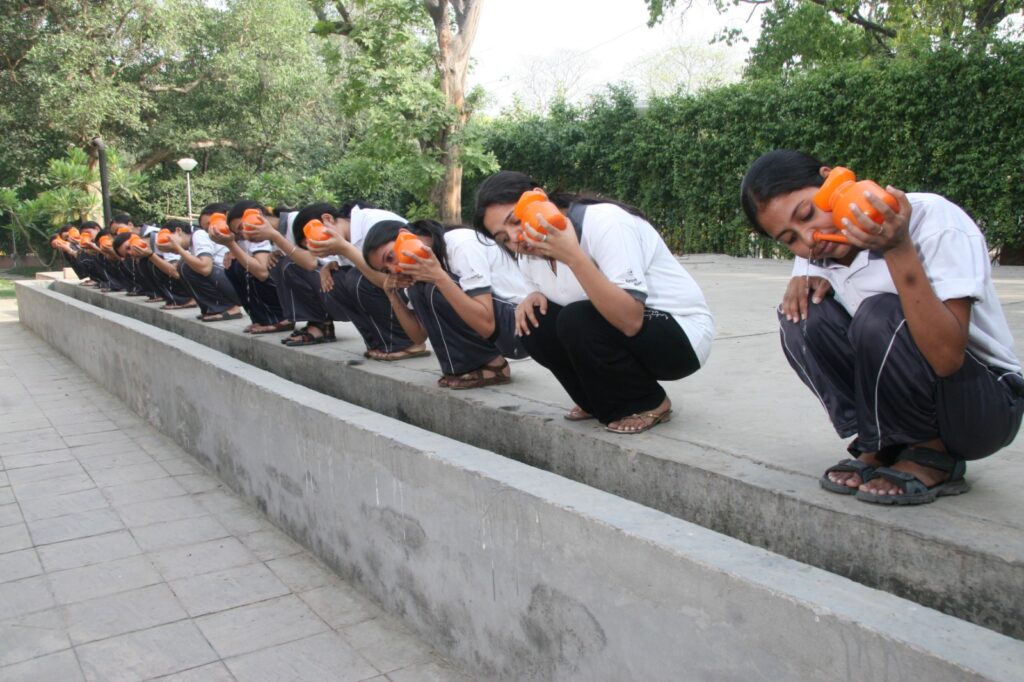What is Jal Neti?
Jala Neti is a cleansing yoga, also known as nasal irrigation, and comes with many benefits like sinus treatment, preventing respiratory blockage, good for ENT, etc. If not done correctly, it can also come with some side effects. Therefore, initially, it should be done in the presence of a Yoga teacher.

What is Jal Neti Pot?
- A Jal Neti pot or Lota (pitcher) introduces salt water into the nostrils.
- The post, which has been used in the picture, can be preferred that a pot should be used which does not contaminate water.
- The equipment should be suitably fit into your nostril.
Why salt water in Jal Neti?
- Pure and lukewarm should be used.
- The proportion of salt & water should be one teaspoonful per half litre of water.
- Salt water has higher osmotic pressure than ordinary water, which is not easily absorbed into the nose’s delicate blood vessels and membranes.
How do you sit for nasal cleansing?
- Kagasana is suitable for the process.
- Sanding posture by bending the shoulders and head forwards.
Nasal cleansing (Jal Neti) steps
- Sit in Kagasana
- Now, put the end of the nozzle into the left nostril or whichever one is free.
- Bend your head to the right side while raising the neti pot, so water runs into the left nostril.
- Keep your mouth open to facilitate breathing.
- Allow the salted water to flow through the nostrils for 10 to 20 seconds.
- Remove the neti pot, water and impurities from your nose by closing the left nostril, and it should be done quickly and forcibly through the right nostril.
- Now close the right nostril and blow forcibly through the left nostril.
- Repeat the same process with the other nostril.
Tips while doing Jal Neti
- Make sure the salt is entirely dissolved in the water.
- Normal water shouldn’t be used as it can penetrate nasal mucous membranes.
- Don’t blow hard while removing impurities; it can damage your nose and cause bleeding.
- It shouldn’t be practised after meal.
Precaution
- Those who suffer from chronic nose bleeding should not do neti.
- Water shouldn’t be too hot.
- When the sinuses are blocked with mucus, avoid hard blowing.
- If one tilts one’s head too much, the water will go down the throat instead of the other nostril.
- It is better to take expert advice before practising.
- There might be a slight burning sensation in the beginning, but gradually, it will disappear.
Side effects of Jal Neti
- After jal neti, the nostrils should be dry entirely by vigorous breathing to avoid infections.
- If one uses high salt in water, there is a chance of nose bleeding.
- There might be nose and ear pain if the nostrils don’t dry completely.
- The Neti pot should be contaminated; otherwise, it can lead to infections.
Duration
- Five minutes is enough to complete the process.
- Better to practice in the morning before breakfast.
- If required, it can be practised at any time of the day.
- Once a day is enough. However, it can be practised more than once in case of respiratory congestion.
Benefits of Jal Neti
- It is the best method of preventing and eradicating colds and coughs.
- Helps to work the nasal passage to work smoothly.
- Helps in curing sinusitis
- Good for eye ailments
- Throat issue
- Tonsillitis
- Catarrh
- Prevents inflammation of the adenoids and mucus membranes.
- Effective in removing headaches, insomnia and tiredness.
- Helps to relieve ailments such as migraine, depression and tension.
- Prevents lung diseases such as asthma, pneumonia, bronchitis and pulmonary tuberculosis.
- Improves intake of oxygen and removal of carbon dioxide.

1 thought on “Nasal Cleansing Yoga (Jal Neti Kriya) Steps, Side effects, Benefits”